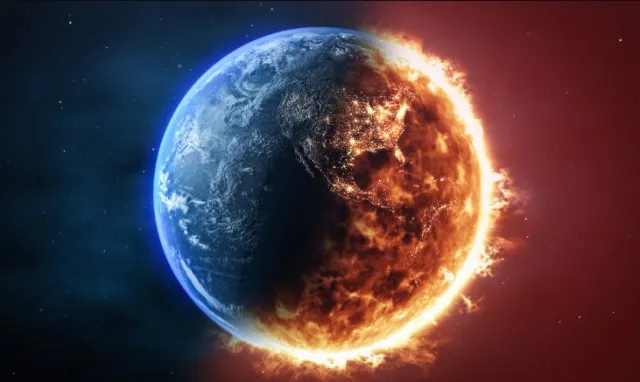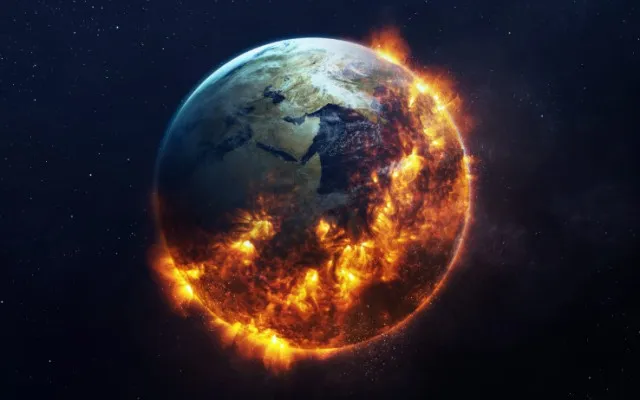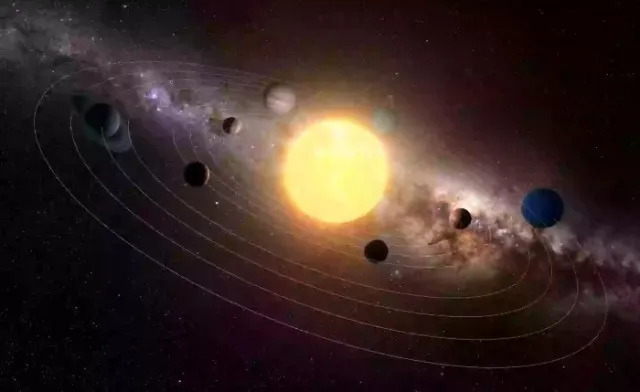NASA scientists predict Earth’s oxygen will significantly decline in the future as CO2 levels rise and atmospheric conditions shift.
NASA scientists have revealed startling projections about Earth’s future.
They indicate that our planet could eventually run out of oxygen due to rising carbon dioxide (CO2) levels.
As greenhouse gases continue to accumulate in Earth’s atmosphere, the oxygen-rich environment that sustains life will begin to disappear.
Over time, it could be replaced by a methane-dominated atmosphere, potentially wiping out all living organisms.
According to research published in Nature Geoscience, this transformation could occur within the next billion years.

Rising CO2 levels are changing Earth’s atmosphere.
The study was led by Kazumi Ozaki, Assistant Professor at Toho University, and Christopher Reinhard, Associate Professor at Georgia Institute of Technology.
It explores the long-term effects of rising CO2 levels and increasing solar radiation on Earth’s atmosphere.
Using a computer model, scientists predict that atmospheric oxygen will catastrophically decline over time.
The model considers the Sun’s increasing brightness as a central factor.
As the Sun gradually becomes hotter over the next billion years, it will emit more intense solar radiation.
This will significantly affect Earth’s atmosphere and the stability of its life-sustaining properties.
The slowing of the carbonate-silicate cycle will worsen, impacting CO2 regulation on Earth.

NASA scientists reveal exact moment oxygen era on Earth will end as CO2 levels rise
The scientists’ research suggests that Earth’s oxygen levels could plummet to less than 10% of their current concentration in approximately one billion years.
The oxygen reduction will shift Earth’s atmosphere to methane, causing mass extinction of life.
The increasing solar brightness, along with changes in atmospheric carbon dioxide, is expected to disrupt the conditions for photosynthesis.
This process, where plants convert CO2 into oxygen, will be significantly affected.
Ozaki commented on the findings, noting, “It’s generally thought Earth’s biosphere will come to an end in 2 billion years due to overheating and CO2 scarcity for photosynthesis.”

However, he added that the exact timeline of when oxygen levels will start to decrease remains unclear.
As the Sun continues to heat up, solar flares will become more frequent, releasing massive amounts of energy.
This will further disrupt the planet’s atmosphere and magnetosphere, directly impacting the oxygen and ozone concentrations needed to support life.
Sun’s influence on Earth’s future
One of the most alarming conclusions of the study is the certainty that Earth’s atmosphere will eventually lose its oxygen content, even though it is still a long way off.
Ozaki and Reinhard’s model predicts that the first signs of deoxygenation will occur before Earth’s climate reaches a “moist greenhouse” state.
It also suggests that this will happen prior to the extensive loss of surface water.
This eventual deoxygenation will be triggered by the increasing solar flux.

This phenomenon will be influenced by the energy exchange between Earth’s mantle and the ocean–atmosphere–crust system.
The study suggests that this future shift in atmospheric composition is inevitable, as the Sun’s energy output gradually increases.
This change will end the oxygen-rich environment, making Earth inhospitable for life dependent on oxygen.
Implications for astrobiology and space exploration are significant.
NASA’s study also holds significant implications for the field of astrobiology.
Scientists have long considered oxygen to be a vital biosignature, a potential indicator of life on other planets.
Studying Earth’s changing oxygen levels helps researchers detect potential life beyond our planet.
Astrobiologists search for oxygen on distant planets, hoping to find conditions similar to those supporting life on Earth.
Understanding Earth’s atmospheric evolution could help scientists assess the potential for life on exoplanets, aiding the search for extraterrestrial life.